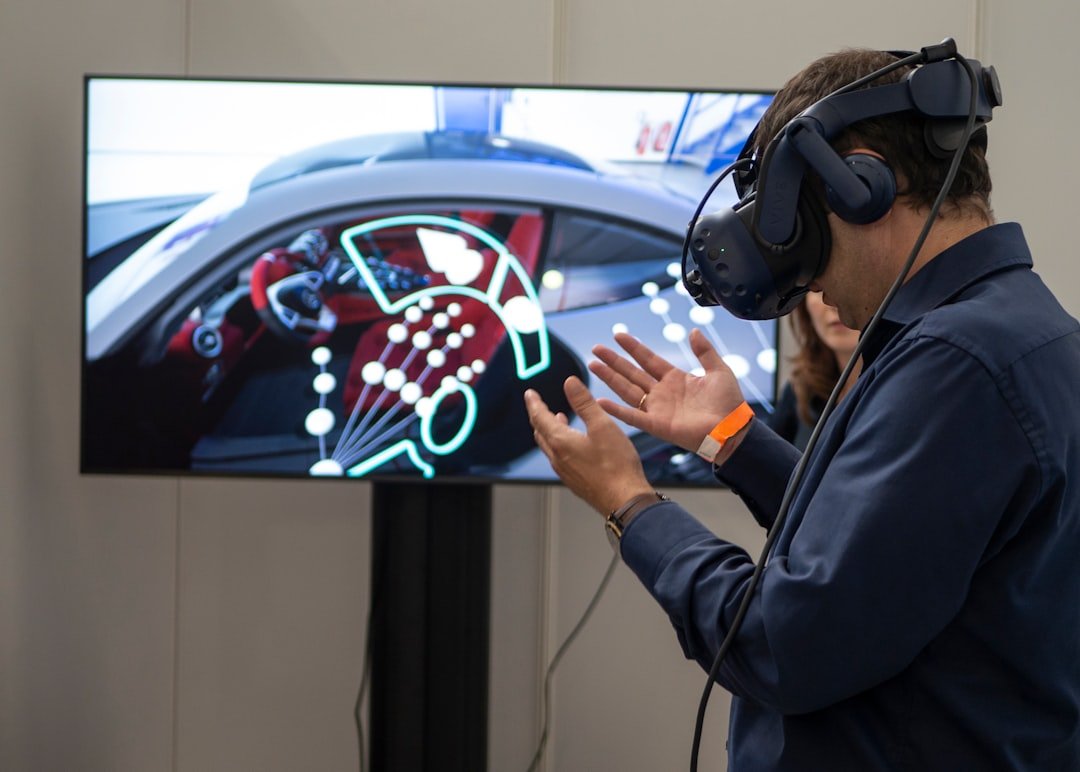Now Reading: The Evolution of HUDs in Video Games
-
01
The Evolution of HUDs in Video Games
The Evolution of HUDs in Video Games

Reflecting on the early days of video games, I can’t help but marvel at how far we’ve come, especially when it comes to the heads-up display (HUD). In the nascent stages of gaming, HUDs were rudimentary at best. They often consisted of simple text overlays that provided players with essential information, such as health points, score, and remaining lives.
I remember playing classic arcade games like “Pac-Man” and “Space Invaders,” where the HUD was minimalistic yet effective. The information was presented in a straightforward manner, allowing me to focus on the gameplay without unnecessary distractions. As technology progressed, so did the complexity of HUDs.
The introduction of 8-bit and 16-bit graphics allowed for more visually appealing displays. I recall the excitement of seeing my character’s health bar or ammo count represented graphically rather than just as numbers. This shift not only enhanced the visual experience but also made it easier for me to gauge my status in the game.
The early days of HUDs laid the groundwork for what would become an integral part of gaming, setting the stage for more sophisticated designs that would follow.
Key Takeaways
- HUDs in video games have come a long way since their early days, evolving from simple displays of basic information to complex and immersive interfaces.
- HUDs play a crucial role in enhancing gameplay by providing essential information to players, such as health, ammo, and objectives, without disrupting the gaming experience.
- The evolution of HUD design and functionality has been driven by advancements in technology, leading to more dynamic and customizable interfaces that adapt to different gaming genres and player preferences.
- The impact of technology on HUD development has led to the integration of virtual reality, enhancing immersion and creating more realistic gaming experiences.
- The future of HUDs in video games is closely tied to the integration of augmented reality, which has the potential to revolutionize how players interact with game environments and information.
The Role of HUDs in Enhancing Gameplay
HUDs play a crucial role in enhancing gameplay by providing players with vital information in real-time. I’ve often found that a well-designed HUD can significantly improve my gaming experience. For instance, in fast-paced action games, having immediate access to my health status, ammunition count, and map location allows me to make quick decisions without breaking my immersion.
The seamless integration of these elements into the gameplay creates a more engaging experience, allowing me to focus on strategy rather than constantly pausing to check my status. Moreover, HUDs can also serve as a narrative tool, enriching the storytelling aspect of games. I’ve noticed that many modern games use HUD elements to convey emotions or themes.
For example, in horror games, a fading health bar or a distorted visual effect can heighten tension and create a sense of urgency. This emotional connection is something I cherish in gaming; it transforms a simple interaction into a memorable experience. The role of HUDs extends beyond mere functionality; they are essential in crafting an immersive world that resonates with players on multiple levels.
The Evolution of HUD Design and Functionality

As I look back on the evolution of HUD design, it’s fascinating to see how aesthetics and functionality have intertwined over the years. Early HUDs were often cluttered and utilitarian, focusing solely on delivering information. However, as game developers began to understand the importance of user experience, they started to prioritize clean and intuitive designs.
I remember playing “Halo” for the first time and being struck by how its HUD elegantly displayed information without overwhelming me. The use of color coding and spatial arrangement made it easy to digest critical data at a glance. In recent years, I’ve observed a trend toward customizable HUDs, allowing players to tailor their experience according to their preferences.
This evolution reflects a growing understanding that every player has unique needs and play styles. For instance, some players prefer minimalistic designs that keep distractions to a minimum, while others enjoy more detailed displays that provide comprehensive information. This flexibility has made gaming more accessible and enjoyable for a broader audience, allowing me to engage with games in ways that suit my personal style.
The Impact of Technology on HUD Development
The impact of technology on HUD development cannot be overstated. As hardware capabilities have advanced, so too have the possibilities for creating more dynamic and interactive HUDs. I remember when 3D graphics became mainstream; suddenly, HUDs could be integrated into the game world itself rather than being confined to static overlays.
This shift allowed for more immersive experiences, where information could be presented contextually within the game environment. For example, in racing games, speedometers and navigation aids can now appear on the dashboard of the car rather than as separate elements on the screen. Moreover, advancements in artificial intelligence and machine learning have opened new avenues for HUD functionality.
I’ve seen games that adapt their HUD elements based on my gameplay style or skill level, providing tailored information that enhances my experience. This level of personalization is exciting; it feels as though the game is responding to me as an individual rather than treating me as just another player. The continuous evolution of technology ensures that HUDs will keep advancing, pushing the boundaries of what is possible in gaming.
The Influence of Virtual Reality on HUDs
Virtual reality (VR) has revolutionized how I perceive and interact with video games, and HUDs are no exception to this transformation. In VR environments, traditional HUDs often feel out of place; they can break immersion and detract from the overall experience. As a result, developers have had to rethink how they present information in these immersive worlds.
I’ve experienced VR games where HUD elements are seamlessly integrated into the environment—like a holographic display that appears in front of me or information projected onto objects within the game world.
Instead of glancing at a corner of the screen for my health status or inventory, I can now physically reach out and interact with these elements as if they were part of my surroundings.
This level of engagement enhances my sense of presence within the game and makes every action feel more meaningful. As VR technology continues to evolve, I’m excited to see how HUDs will adapt further to create even more immersive experiences.
The Integration of Augmented Reality in HUDs

Immersive Gaming Experiences
I’ve had the opportunity to play AR games like “Pokémon GO,” where my surroundings become part of the game world. The HUD in such games is crucial; it provides me with real-time information about nearby creatures or objectives while still allowing me to navigate my physical space.
New Possibilities for Social Interaction
The integration of AR into gaming has opened up new possibilities for social interaction as well. I’ve participated in multiplayer AR experiences where players can see each other’s avatars and interact within shared spaces. The HUD becomes a bridge between players, facilitating communication and collaboration in ways that traditional gaming interfaces cannot achieve.
The Future of HUDs in Gaming
As AR technology continues to advance, I anticipate even more creative uses for HUDs that will redefine how we engage with both games and our environment.
The Future of HUDs in Video Games
Looking ahead, I am filled with anticipation for the future of HUDs in video games. As technology continues to evolve at an unprecedented pace, I believe we will see even more innovative designs that enhance gameplay experiences. One area that excites me is the potential for fully immersive interfaces that respond to my movements and gestures without requiring traditional controllers or input devices.
Imagine a world where I can manipulate HUD elements with simple hand gestures or voice commands—this level of interactivity could redefine how I engage with games. Additionally, I foresee an increased emphasis on accessibility in HUD design. As gaming becomes more inclusive, developers will likely prioritize creating interfaces that cater to players with diverse needs and preferences.
This could involve customizable color schemes for colorblind players or adjustable text sizes for those with visual impairments. The future of HUDs holds great promise for creating experiences that are not only engaging but also welcoming to everyone.
The Importance of User Interface in HUD Design
The user interface (UI) is a critical component of HUD design that directly impacts my gaming experience. A well-designed UI ensures that information is presented clearly and intuitively, allowing me to focus on gameplay rather than struggling to decipher complex displays. I’ve encountered games where poor UI choices led to frustration; cluttered screens or confusing layouts can detract from immersion and enjoyment.
Conversely, when a game features a clean and organized UI, it enhances my ability to navigate challenges effectively. Moreover, the relationship between UI and player feedback is essential in creating an engaging experience. I appreciate when games provide visual or auditory cues that indicate my actions’ success or failure—such as a satisfying sound when I collect an item or a visual effect when I take damage.
These feedback mechanisms are integral to maintaining my engagement and motivation throughout gameplay. A thoughtful UI design not only conveys information but also fosters a deeper connection between me and the game world.
The Evolution of HUDs in Different Gaming Genres
The evolution of HUDs varies significantly across different gaming genres, each requiring unique approaches to information presentation. In first-person shooters (FPS), for instance, HUDs often prioritize real-time data such as health status, ammo count, and minimaps—elements crucial for survival in fast-paced environments. I’ve played FPS games where the HUD dynamically changes based on my actions; for example, when I’m low on health, visual effects may distort my screen to heighten tension.
In contrast, role-playing games (RPGs) tend to feature more complex HUDs that encompass inventory management, skill trees, and quest tracking. These elements require a different approach; I appreciate when RPGs provide clear navigation tools that help me manage my character’s progression without feeling overwhelmed by information overload. Each genre’s unique demands shape how developers design their HUDs, ensuring that they enhance rather than hinder gameplay.
The Cultural and Aesthetic Significance of HUDs
Beyond their functional roles, HUDs also carry cultural and aesthetic significance within gaming communities. As I engage with various titles, I’ve noticed how certain design choices resonate with players on an emotional level—whether through nostalgia or artistic expression. For example, retro-inspired games often feature pixelated HUD designs reminiscent of classic titles from my childhood, evoking feelings of nostalgia while simultaneously appealing to new audiences.
Moreover, the aesthetic choices made in HUD design can reflect broader cultural trends within gaming culture itself. From minimalist designs favored by indie developers to elaborate interfaces seen in AAA titles, these choices contribute to the overall identity of a game and its community. As I explore different genres and styles, I find myself drawn not only to gameplay mechanics but also to how these visual elements shape my perception of each title.
The Role of HUDs in Immersive Gaming Experiences
Ultimately, HUDs play a pivotal role in creating immersive gaming experiences that captivate players like myself. A well-crafted HUD enhances my connection to the game world by providing essential information while maintaining immersion through thoughtful design choices. Whether it’s through contextual displays that blend seamlessly into environments or dynamic elements that respond to my actions, these interfaces contribute significantly to how I engage with narratives and challenges.
As gaming continues to evolve into increasingly immersive experiences—especially with advancements in VR and AR—the importance of effective HUD design will only grow. I look forward to witnessing how developers push boundaries further while ensuring that these interfaces remain intuitive and engaging for players like me. In this ever-changing landscape, one thing is certain: HUDs will continue to be an integral part of what makes gaming such a rich and rewarding experience.
If you’re interested in the latest gaming news, you may want to check out this article that discusses what’s next for gamers. It’s always exciting to see how technology continues to evolve in the gaming industry, such as the evolution of HUDs in video games. Stay informed and stay ahead of the game with the latest updates on gaming trends and innovations.
FAQs
What is a HUD in video games?
A HUD, or heads-up display, is a graphical interface that appears on the screen during gameplay to display important information such as health, ammo, and other game-related data.
How has the HUD evolved in video games?
The HUD in video games has evolved from simple text-based displays to more complex and visually appealing interfaces. It has also become more customizable, allowing players to adjust the layout and content of the HUD to their preferences.
What are some common elements found in a video game HUD?
Common elements found in a video game HUD include health bars, ammo counters, mini-maps, objective markers, and other indicators related to the game’s mechanics and objectives.
How has the use of augmented reality impacted HUDs in video games?
Augmented reality has allowed for the integration of HUD elements directly into the player’s real-world environment, creating a more immersive and interactive gaming experience.
What are some examples of innovative HUD designs in video games?
Examples of innovative HUD designs in video games include dynamic HUDs that change based on the player’s actions, minimalist HUDs that prioritize immersion, and context-sensitive HUDs that adapt to different gameplay situations.



























